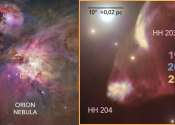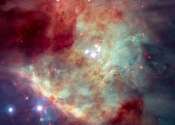'Yoyo stars' found responsible for off-center cosmic bubbles
Astronomers have developed a new model to simulate the formation of a cluster of baby stars. Comparison with the well-known real case of the Orion Nebula shows that its off-center bubble of ionized gas was caused by a massive ...









